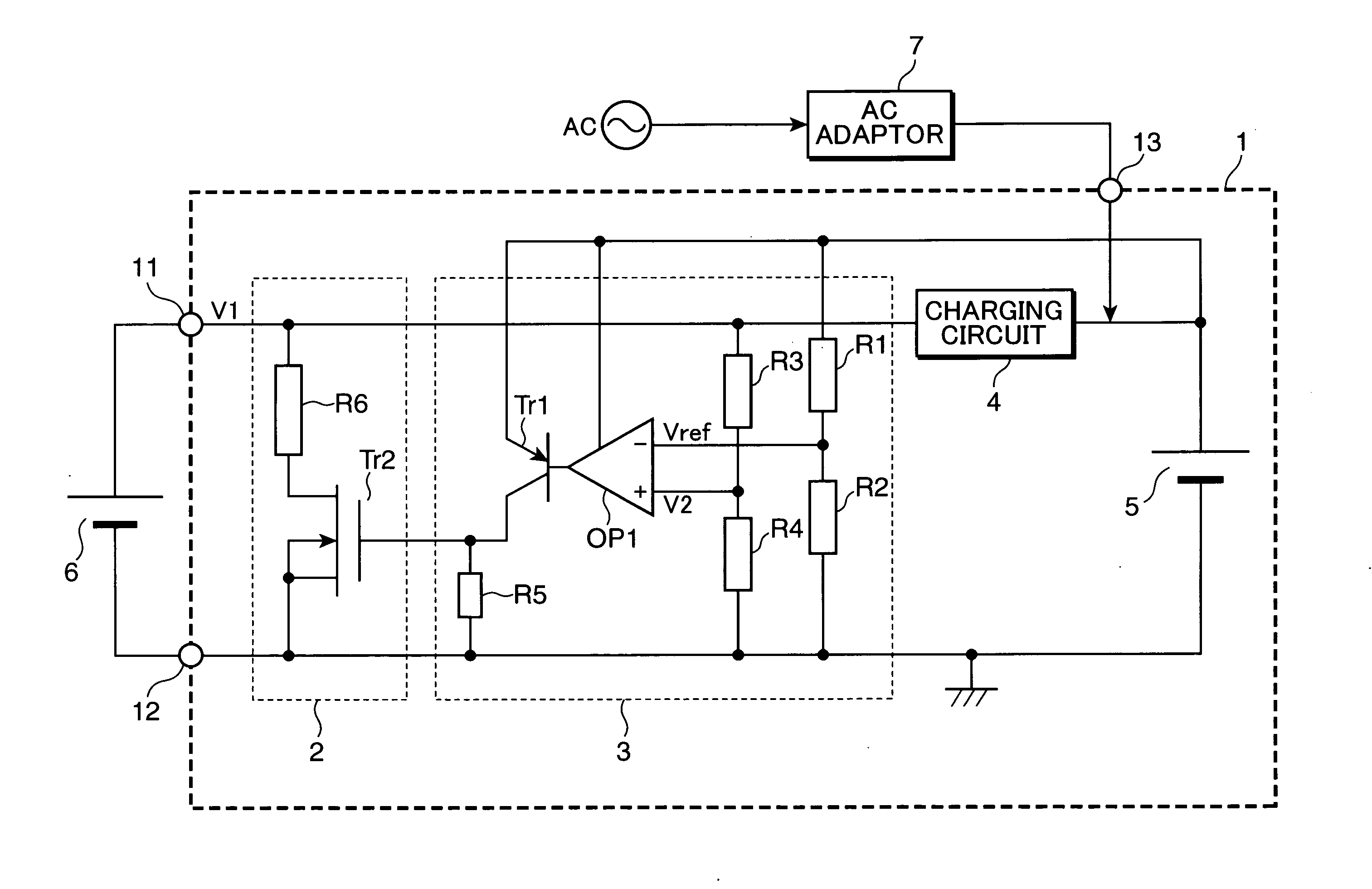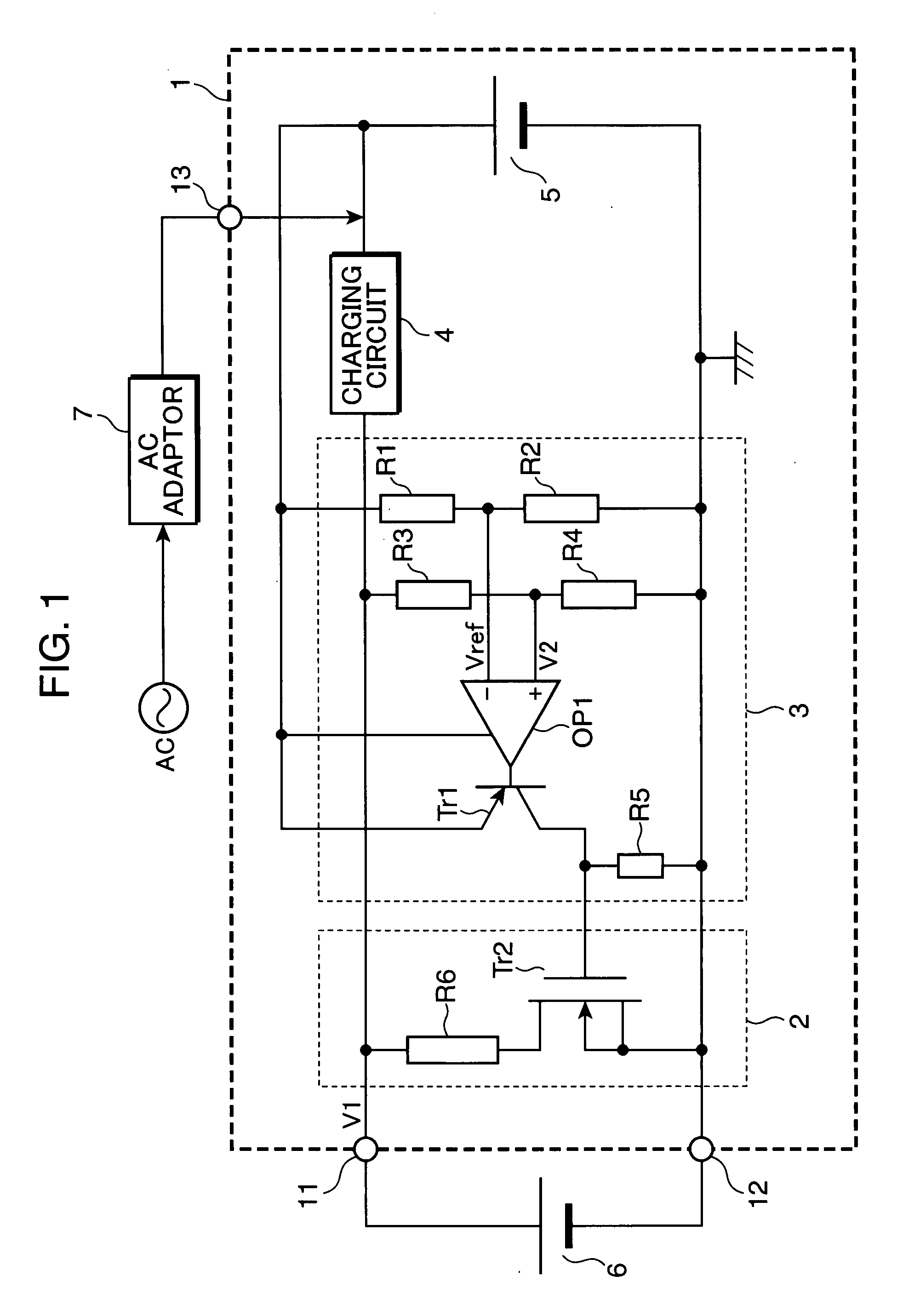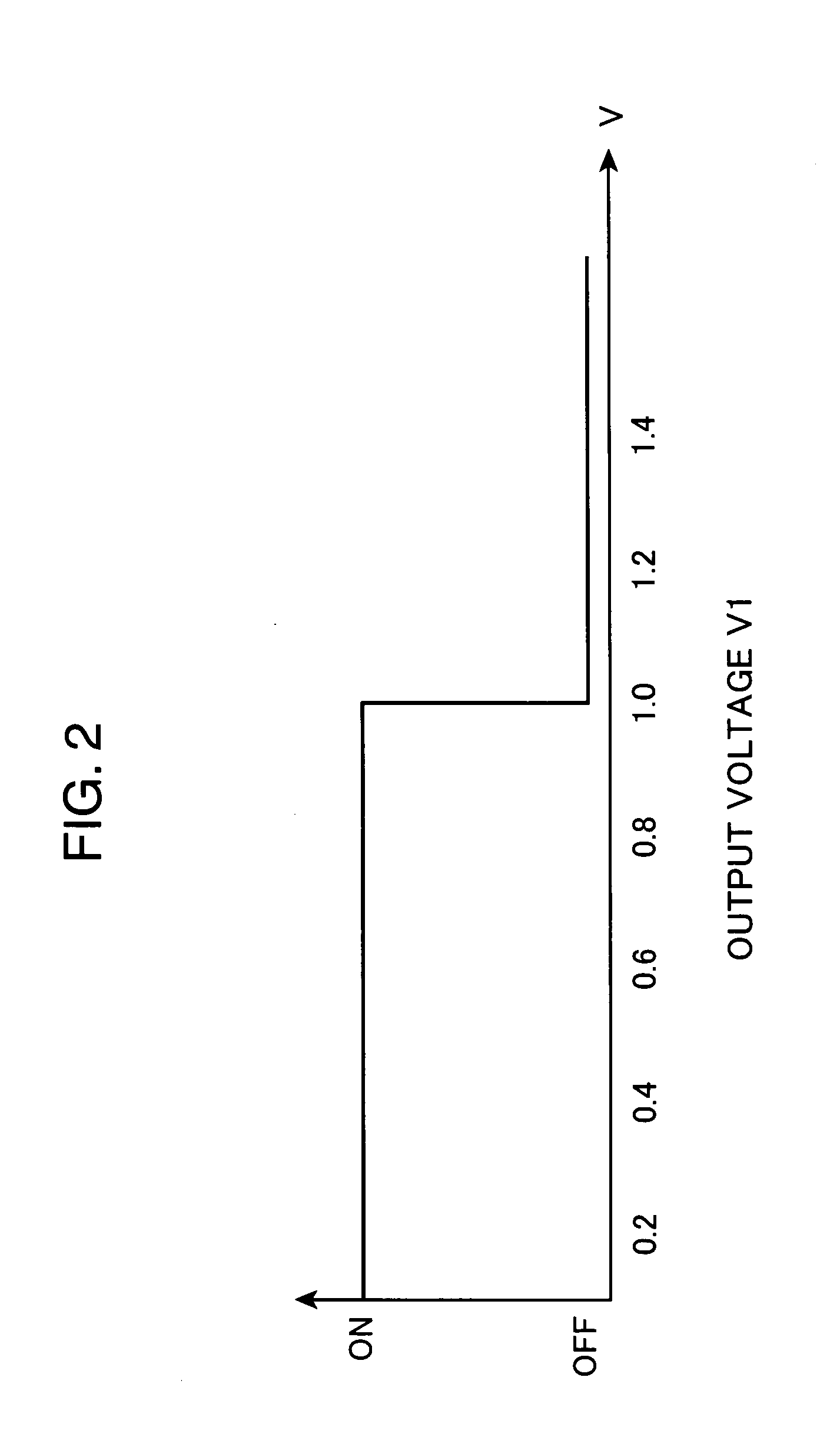Electrical device and battery pack
a battery pack and electric device technology, applied in the direction of cell components, primary cell maintenance/service, safety/protection circuit, etc., can solve the problems of inconvenient use, drastic temperature rise of the cell, and the inability to charge the secondary battery, so as to prevent polarity reversal and less concern
- Summary
- Abstract
- Description
- Claims
- Application Information
AI Technical Summary
Benefits of technology
Problems solved by technology
Method used
Image
Examples
Embodiment Construction
[0030] Hereinafter, favorable embodiments of the present invention will be described with reference to drawings. The codes common in respective Figures indicate the same components, and duplicated description is omitted. FIG. 1 is a block diagram showing an example of the configuration of the electrical device in an embodiment of the present invention. The electrical device 1 shown in FIG. 1 is a portable electrical device such as cellphone or digital camera, using a secondary battery as its power source. The electrical device 1 shown in FIG. 1 has, for example, a positive electrode terminal 11, a negative electrode terminal 12, an external-power-source lead terminal 13, a short circuiting portion 2, a voltage detector 3, a charging circuit 4 (charger), and a secondary battery 5. The electrical device 1 is configured to charge the main power source, secondary battery 5, with output power from an auxiliary power source, primary battery 6 (battery), connected externally to the positiv...
PUM
 Login to View More
Login to View More Abstract
Description
Claims
Application Information
 Login to View More
Login to View More - R&D
- Intellectual Property
- Life Sciences
- Materials
- Tech Scout
- Unparalleled Data Quality
- Higher Quality Content
- 60% Fewer Hallucinations
Browse by: Latest US Patents, China's latest patents, Technical Efficacy Thesaurus, Application Domain, Technology Topic, Popular Technical Reports.
© 2025 PatSnap. All rights reserved.Legal|Privacy policy|Modern Slavery Act Transparency Statement|Sitemap|About US| Contact US: help@patsnap.com



